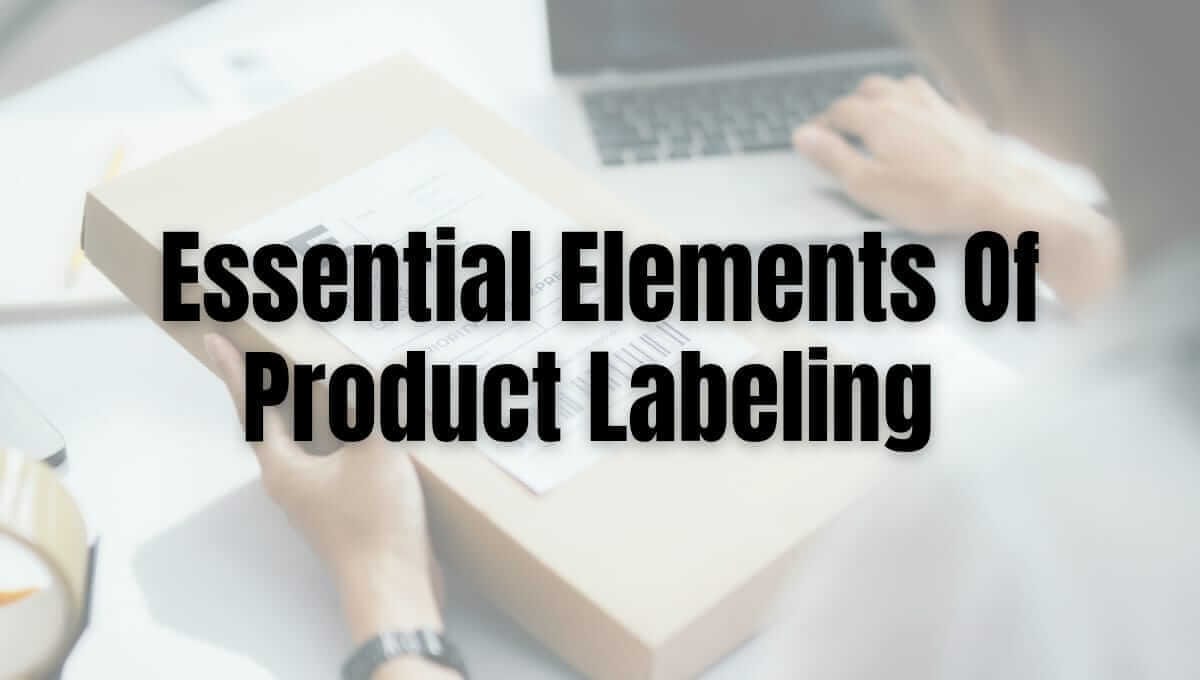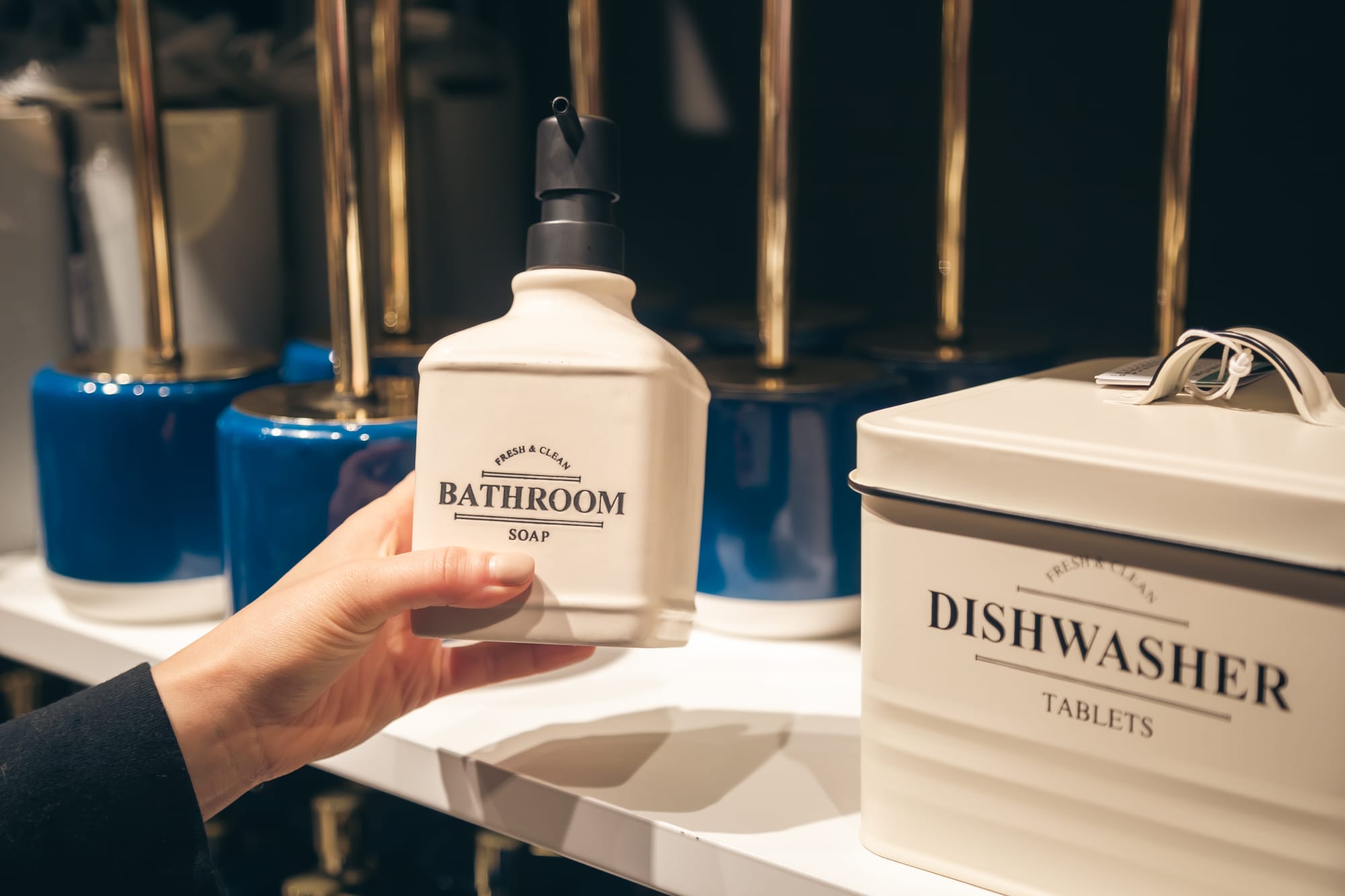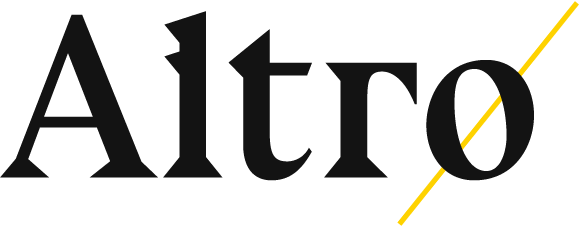Essential Elements of Effective Product Labels

The first thing customers notice about your product is the labeling. Labeling heavily influences customers' decision-making, so if you don't use it correctly, you will lose a lot of sales. To make the product launch successful, you need to create a compelling label that will attract the attention of customers.
Ask yourself why customers want to purchase a product without an attractive label design. How can you leave an unforgettable impression on your audience with it?
The primary goal of your product label is to appeal to customers. Adding high visual appeal makes consumers curious and encourages them to discover more about the product.
But you might be wondering how to start creating such labels. How can you use your product labels as an incredible marketing tool?
This detailed guide will explore some label elements of effective product labels to gain consumer attention.
So, keep reading to learn more.
The Role of Product Labels
The product label is printed on the product and includes all the details. It includes the manufacturer's information, the name of the product, instructions on product usage, and a legal disclaimer. The labels are not merely a requirement but more than that. They're an opportunity for brands to communicate their values, quality, and uniqueness.
But you might wonder if product labels matter.
The truth is Yes. Here are some of the ways product labels elevate a brand.
A good label must be synonymous with the brand. Communicate with your audience and tell them:
- Who are you?
- What does your product represent?
Another important aspect of product labeling is that it prevents several legal issues. Product packaging and labels help companies meet legal standards, from the list of ingredients ingredients to adding safety warnings. This gives your customers a better idea about your product, leading to transparency and consumer protection.
Now, suppose the customer goes into the market and sees two products. Product A is from your company, and product B is from a competitor. But your food label is professional, clear, and visually appealing, unlike your competitor's, which simply copied and pasted some words on the label with bold colors.
Which product will you choose?
- Product A
- Product B
It's most likely product A because it includes all the information you want. Product labels influence customers' purchasing decisions and make you a winner in the competitive market.

Key Elements Of An Effective Product Label
Now that you know what a product label is, let's look at some of the elements of an effective label, including design elements, label size, etc. This will help you design a label that increases sales and improves your brand reputation.
Brand Identity
A product label is a direct reflection of the brand. You should include all the key elements to ensure there's consistency. Here are the key components you need to add:
- Logos
- Fonts
- Colors
Use labels to strengthen brand loyalty and customer satisfaction. Don't add blurry, low-quality, or smudged images or logos. Use a recognizable logo so customers automatically associate your product with the brand. Many successful companies are doing this and moving one step ahead by using relevant fonts and colors.
Clarity And Readability
A confused customer will never purchase your product. So, you should give clarity to the customers by making product labels easy to understand.
Make sure the product label is
- Easy to read
- Quickly understandable
Replace complex fonts with simple and clean ones. Your customer should easily read the text on the product label, even from a distance.
Focus on the contrast between your label text and background. It plays a crucial role in enhancing readability. Here are some that you can use.
|
Background Color |
Text Color |
Contrast Level |
|
White |
Black |
High |
|
White |
Dark Blue |
High |
|
Light Gray |
Dark Gray/Black |
Medium to High |
|
Black |
White |
High |
|
Black |
Light Gray |
Medium |
|
Red |
White |
High |
|
Yellow |
Black |
High |
|
Green |
White |
High |
Adding too many visual elements to product labels is not always a good idea. Simplicity ensures that customers quickly find the product they are looking for.
Product Information
If you're buying a food product, you will first look at the product label. It includes all the essential details about the product so customers know all the critical information. It's also helpful in building trust and loyal customer base.
Here's the information that you must add to your product label
- Product name
- Ingredients or materials
- Label manufacturer details
- Net weight
- Usage instructions
Avoid making false or high claims. This can cause customer dissatisfaction, which, in the worst case, may lead to legal action.
Compliance and Regulations
Depending on your industry, there are some legal requirements and aspects to which you must comply. But what if you fail to comply with those regulations?
Then, it can lead to fines, recalls, and even lawsuits.
Every food product label must include nutritional information, allergens, and safety warnings. The legal requirements are strict, especially in the food and pharmaceutical industries. Research guidelines for your niche to avoid any issues.
Visual Appeal
Add visual appeal to your product by adding relevant images, icons, or graphics. It enhances the aesthetic appeal of your product and doesn't overwhelm customers.
The layout should be visually balanced and guide the consumer's attention smoothly from one point to another. That's why most companies use attractive images on beverage labels, which compels customers to purchase the product.

Material And Durability
Labels looking good is enough?
Not at all.
You must also focus on other elements, such as material and durability. With the right materials, your labels will remain intact throughout the product's lifecycle. Every step, from transportation to storage, goes smoothly, and it's important to create an effective label design.
Use durable materials that don't negatively impact the environment. They should withstand harsh environmental conditions like heat, moisture, or friction. Experiment with different label types, such as pressure-sensitive labels.
Additional Tips For Creating Effective Labels

Now that you know the basic elements of product labels, you can create attractive labels. But that's not enough.
Here are some additional tips for creating effective labels.
- Test & Evaluate Designs: You should create several prototypes before finalizing your label product. Once you are done with them, test them in real-world scenarios. Check the quality of your product label and its functionality in extreme weather conditions.
- Design Tools and Software: Incorporate artificial intelligence to streamline the label design process. Tools such as MidJourney, Canva, and Adobe Illustrator offer flexibility in layout and design.
- Gain Customer Feedback: Get feedback about the product labels from your customers. Note the information they find useful and make it easy to read. That way, you can improve the label before launching the product.
Case Studies Of Successful Product Labels
Several businesses have implemented these labeling elements in their product labels. Let's look at some of the most successful case studies that will inspire you to create better labels.
- Coca-Cola: It has an iconic red-and-white design with a classic logo. Due to its bright color and unique topography, you can easily identify this brand even in the sea of products. Due to this simplicity and consistency across several product lines, Coca-Cola has built a unique global brand identity.
- Method Cleaning Products: Method's products work incredibly well and have a wide array of features. Moreover, its minimal packaging and labels get a lot of attention from customers. They carefully use clean fonts along with vibrant colors. The packaging also reflects the brand's mission, which is eco-friendliness.
- RXBAR: It has a minimal packaging with concise information. The label excludes unnecessary data that may repel the customer from purchasing. The core ingredients of RXBAR are in large and bold text, which shows their transparency.
To Sum Up
Through label designs, you can easily stand out from the crowd and gain a competitive edge. By making descriptive labels, your audience doesn't have to research too much about the product because all the necessary information is already on the labels. That's why product labels are ideal for boosting brand identity.
However, doing it alone can be difficult, and choosing the right labeling company can be confusing. At Altro Labels, we assist businesses in improving their product labels, which increases their customer base.
Do you've any further questions?
Then, reach out to us today via email. Check out our stellar portfolio here.
Frequently Asked Questions
What Information Should Be Included in a Product Label?
A product label should include all the information concisely. Ensure the label information is not too long because it confuses the audience. The basic product information includes the name of the product, details of the manufacturer, instructions regarding the usage of the product, net weight, and detailed safety warnings to save your business from lawsuits. For some products, you may need to add additional information, such as for cosmetic and food products, you need to include allergen warnings.
What Are The Basic Principles Of Product Labeling?
The five basic principles of product labeling help companies design compelling product labels. You should keep the label to the point and make it unique. This will make your label stand out and gain the attention of your target customers. Don't add any false claims to the product label; instead, keep it real and make it adjustable. Lastly, always highlight the plus points and advanced features of your product.
